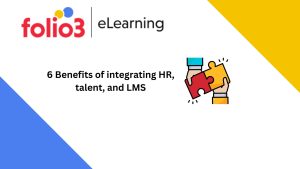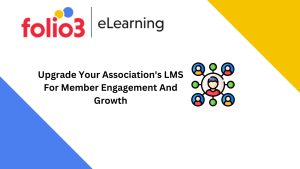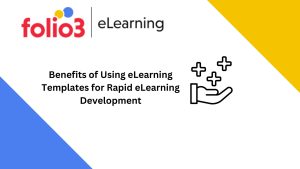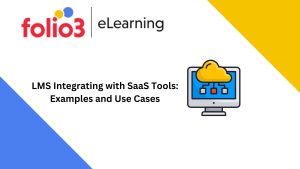
We know how introducing eLearning to your business can be a daunting task. So we decided to share five of the best ideas that scream innovation and guarantee you a successful custom eLearning development project. But before we jump on the idea boat, let us first agree on what a successful eLearning project really is.
What is a Successful Custom eLearning Development Project?
Success is relative. One person’s definition of a successful eLearning project may differ from another person’s point of view about the same. A successful eLearning development project values your organization’s culture. It takes your learners and their capabilities into consideration. It is built around their needs and your goals for the project. All this can only be achieved with a tailored or custom eLearning development project that is built according to the specific needs and challenges of your organization and learners. It has relevant content and covers all your eLearning objectives and most of all, it keeps your learners engaged and helps them retain the knowledge they have learned. Lastly, it should also ensure that the learners are able to apply what they have learned.
Do you see now how a successful eLearning project for you may not be successful for someone else? Because your solution caters to the needs of YOUR organization and works best for YOUR learners. Now that we are on one page about what a successful eLearning project is, let’s get to the five ideas that will help you build it!
Idea #1: Make it Learner-Centric
Let’s start with the most obvious one. Like we said in the definition of a successful eLearning project, you have got to focus on the learner and his needs. For this idea to work, you first have to identify who your learners are. Then you should perform a detailed discovery to try and find out the current capabilities and knowledge level of the learner and why they need the knowledge being imparted. You need to delve into the details and know exactly how the information is going to impact the learner and what the eventual goal is. Does the learner have to retain the information in his or her memory or does he have to simply understand a concept so he can apply it? How is the learner going to remain engaged? Is he a visual learner or will he need constant engagement in the form of a game?
Learners nowadays need the learning content to be necessary and relevant to their needs. Learners that need to know about food safety and HACCP regulations need a different kind of approach than learners learning how to give a perfect sales pitch. When we focus on what the learner needs from the solution, it helps us stick to the correct approach and keep the information precise. This helps you streamline the whole learning experience for your learners, which leads to a successful eLearning development solution.
Idea #2: Create Authentic and Creative Assessments
There are two types of eLearning solutions: Ones you can customize and ones you can just plug and play. Since we have already decided that we need a custom eLearning development solution in order to guarantee a successful project, we also need to ensure that our solution contains authentic and creative assessments instead of the regular run-of-the-mill ones. Learners need to test their new-found knowledge and what better way is there to test it other than by putting them in the middle of authentic real-life scenarios and testing their decision-making skills?
This gives an element of excitement and fun to assessments that used to be boring and mundane. When assessments are also customized according to the motive behind the learning, it helps learners practice their skills and knowledge which helps them retain the knowledge. For example, an emergency landing drill for pilots can be an assessment in the form of a simulated game, and a customer service assessment can consist of listening to actual customer complaints and having to respond to them.
Idea #3: Always Focus on the End Goal
Set your goals right in the beginning and put them up everywhere so that you never lose sight of it. This is because eventually, that is just what you are trying to achieve with your custom eLearning development solution. Your goal is not the eLearning solution. The solution is merely a means to your goal. Your goal is for your learners to be able to practice what they have learned. It is having your learners retain everything that they have learned.
When you are in the middle of brainstorming or even helping your eLearning development partners design the perfect solution, you often get lost in the details of the content and lose sight of what was important. This can lead to excess content and unnecessary features in the solution, which isn’t really needed. You have to concentrate your focus on the end goals and think about how your custom eLearning development solution can help you achieve these goals.
Idea #4: Welcome Feedback at Every Stage
Everyone wants feedback when they test their solution in the final stages before deployment but that’s not what we are talking about. You should welcome feedback from other stakeholders, especially the learners, at every stage of the process, especially the brainstorming and wireframing stage. This will ensure that both the learners’ and the business goals are being met. It could even help if you get reviewed by a totally unrelated unbiased person to get a third-person opinion. An extra set of eyes will only give you an extra perspective.
Moreover, it is much easier to make modifications in the earlier stages rather than when the project is already in the development stage. It is also a great idea to get different parts of your eLearning solution reviewed by different persons who are relevant to that part. For instance, your design team head could review the design of the solution to ensure that it complies with the branding of the company.
Idea #5: Keep Your eLearning Team on Speed Dial
Never hesitate to give your eLearning partners a call if and when you have any confusion at any stage of the custom eLearning development process. It is very important to stay in the know about any progress in the development of your eLearning solution which is why good eLearning development companies will always keep you in the loop regardless of you asking with regular calls and meetings. But that should not stop you from giving them a call whenever you are overwhelmed or are finding it difficult to understand something about the solution.
Choose an eLearning team that you can rely on and explains the most technical details to you in a way that you can understand. An excellent custom eLearning development company would make you feel like you are the most important customer if not the only one.
What is a Successful Custom eLearning Development Project?
Success is relative. One person’s definition of a successful eLearning project may differ from another person’s point of view about the same. A successful eLearning development project values your organization’s culture. It takes your learners and their capabilities into consideration. It is built around their needs and your goals for the project. All this can only be achieved with a tailored or custom eLearning development project that is built according to the specific needs and challenges of your organization and learners. It has relevant content and covers all your eLearning objectives and most of all, it keeps your learners engaged and helps them retain the knowledge they have learned. Lastly, it should also ensure that the learners are able to apply what they have learned.
Do you see now how a successful eLearning project for you may not be successful for someone else? Because your solution caters to the needs of YOUR organization and works best for YOUR learners. Now that we are on one page about what a successful eLearning project is, let’s get to the five ideas that will help you build it!
Idea #1: Make it Learner-Centric
Let’s start with the most obvious one. Like we said in the definition of a successful eLearning project, you have got to focus on the learner and his needs. For this idea to work, you first have to identify who your learners are. Then you should perform a detailed discovery to try and find out the current capabilities and knowledge level of the learner and why they need the knowledge being imparted. You need to delve into the details and know exactly how the information is going to impact the learner and what the eventual goal is. Does the learner have to retain the information in his or her memory or does he have to simply understand a concept so he can apply it? How is the learner going to remain engaged? Is he a visual learner or will he need constant engagement in the form of a game?
Learners nowadays need the learning content to be necessary and relevant to their needs. Learners that need to know about food safety and HACCP regulations need a different kind of approach than learners learning how to give a perfect sales pitch. When we focus on what the learner needs from the solution, it helps us stick to the correct approach and keep the information precise. This helps you streamline the whole learning experience for your learners, which leads to a successful eLearning development solution.
Idea #2: Create Authentic and Creative Assessments
There are two types of eLearning solutions: Ones you can customize and ones you can just plug and play. Since we have already decided that we need a custom eLearning development solution in order to guarantee a successful project, we also need to ensure that our solution contains authentic and creative assessments instead of the regular run-of-the-mill ones. Learners need to test their new-found knowledge and what better way is there to test it other than by putting them in the middle of authentic real-life scenarios and testing their decision-making skills?
This gives an element of excitement and fun to assessments that used to be boring and mundane. When assessments are also customized according to the motive behind the learning, it helps learners practice their skills and knowledge which helps them retain the knowledge. For example, an emergency landing drill for pilots can be an assessment in the form of a simulated game, and a customer service assessment can consist of listening to actual customer complaints and having to respond to them.
Idea #3: Always Focus on the End Goal
Set your goals right in the beginning and put them up everywhere so that you never lose sight of it. This is because eventually, that is just what you are trying to achieve with your custom eLearning development solution. Your goal is not the eLearning solution. The solution is merely a means to your goal. Your goal is for your learners to be able to practice what they have learned. It is having your learners retain everything that they have learned.
When you are in the middle of brainstorming or even helping your eLearning development partners design the perfect solution, you often get lost in the details of the content and lose sight of what was important. This can lead to excess content and unnecessary features in the solution, which isn’t really needed. You have to concentrate your focus on the end goals and think about how your custom eLearning development solution can help you achieve these goals.
Idea #4:
Idea #4: Welcome Feedback at Every Stage
Everyone wants feedback when they test their solution in the final stages before deployment but that’s not what we are talking about. You should welcome feedback from other stakeholders, especially the learners, at every stage of the process, especially the brainstorming and wireframing stage. This will ensure that both the learners’ and the business goals are being met. It could even help if you get reviewed by a totally unrelated unbiased person to get a third-person opinion. An extra set of eyes will only give you an extra perspective.
Moreover, it is much easier to make modifications in the earlier stages rather than when the project is already in the development stage. It is also a great idea to get different parts of your eLearning solution reviewed by different persons who are relevant to that part. For instance, your design team head could review the design of the solution to ensure that it complies with the branding of the company.
Idea #5: Keep Your eLearning Team on Speed Dial
Never hesitate to give your eLearning partners a call if and when you have any confusion at any stage of the custom eLearning development process.
It is very important to stay in the know about any progress in the development of your eLearning solution which is why good eLearning development companies will always keep you in the loop regardless of you asking with regular calls and meetings. But that should not stop you from giving them a call whenever you are overwhelmed or are finding it difficult to understand something about the solution.
Choose an eLearning team that you can rely on and explains the most technical details to you in a way that you can understand. An excellent custom eLearning development company would make you feel like you are the most important customer if not the only one.









